![How To Make/Create an Invitation in Google Docs [Templates + Examples]](https://images.template.net/wp-content/uploads/2023/07/How-To-Make_Create-an-Invitation-in-Google-Docs-Templates-Examples-788x443.png)
How To Make/Create an Invitation in Google Docs [Templates + Examples]
To formally invite someone or a group of people to an event or activity, you will need to send out…
Feb 29, 2024
Magazine sizes are critical elements to impress readers. Over the years businesses have developed different kinds of concepts and ideas which have prompted magazine companies to launch various magazine sizes and measurements to improve creativity and the whole reading experience.
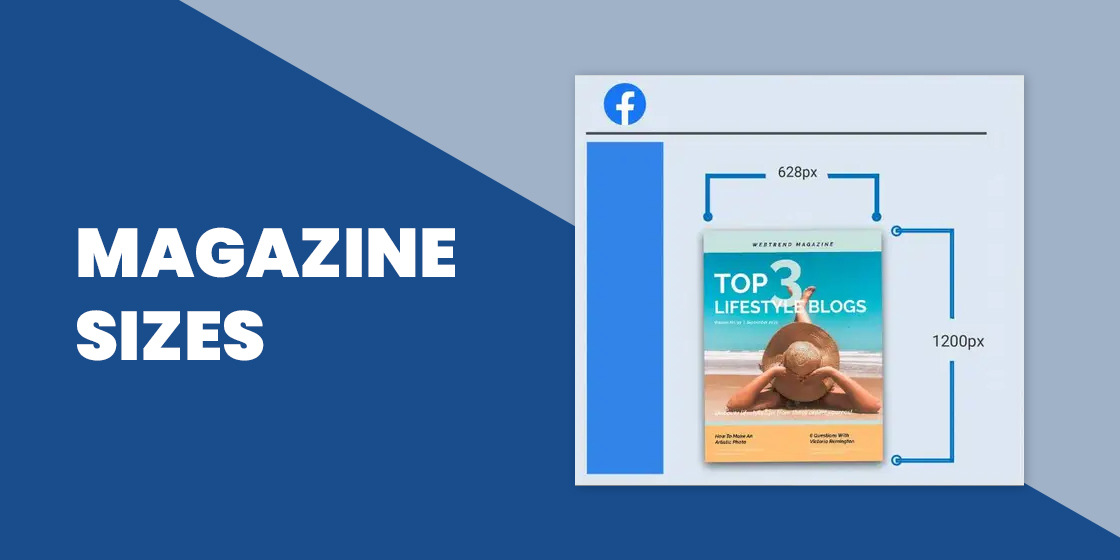
Several companies use DIN A4 size to market their products and services since it best fits a magazine’s visual presentation. Its dimensions are 8.3” × 11.7” or 210mm × 297 mm.
A5 magazine is one of the standard sizes as it has a convenient size of 5.8” × 8.3” or 148mm × 210mm. This allows readers to hold the material easily.
A6 magazine with a size of 4.1” × 5.8” or a maximum of 105mm × 148mm is smaller than A5. Magazines of this size and layout can fit in bags enabling readers to bring them anywhere.
Magazine upload on Facebook has an average resolution size of 1200 × 628px resolution size single images.
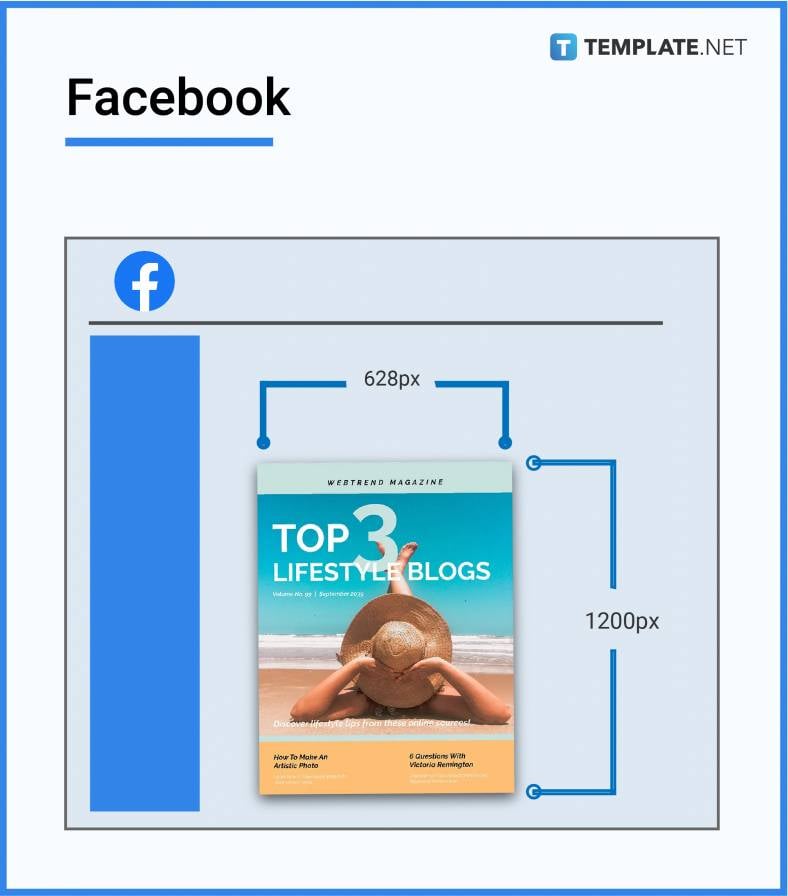
Instagram recommends images to have a resolution of 1220 × 628px (600 × 315px minimum) for landscape horizontal images, square image should be 1080 × 1080px, and the portrait (vertical) 1080 × 1350px.
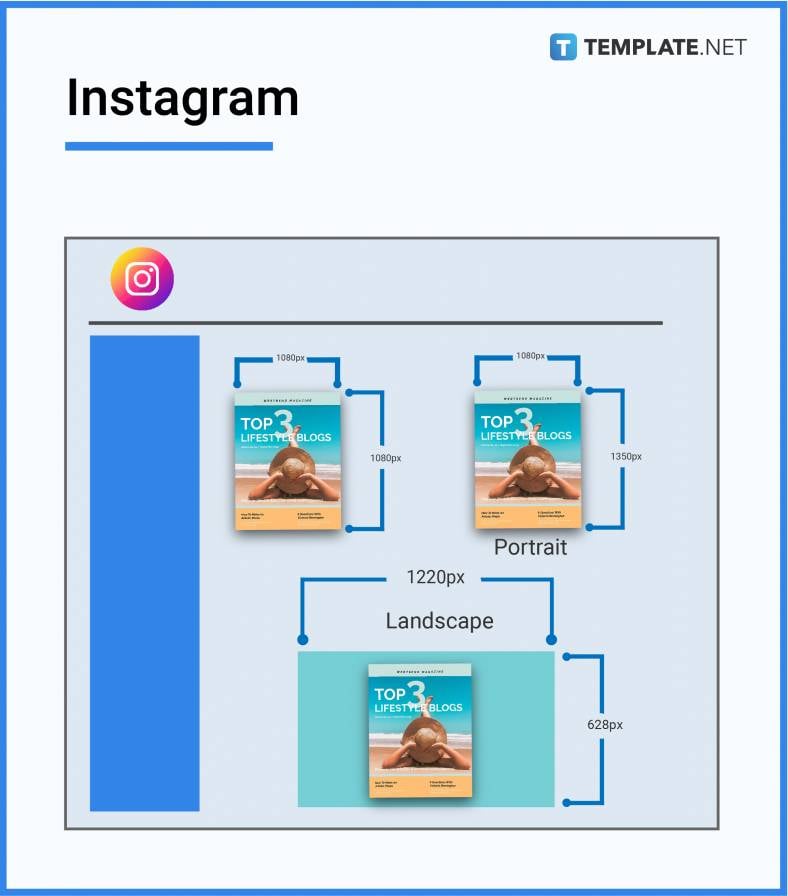
If you wish to post on LinkedIn, it is preferable to have a resolution of 1104 × 736 pixels for images uploaded on this platform.
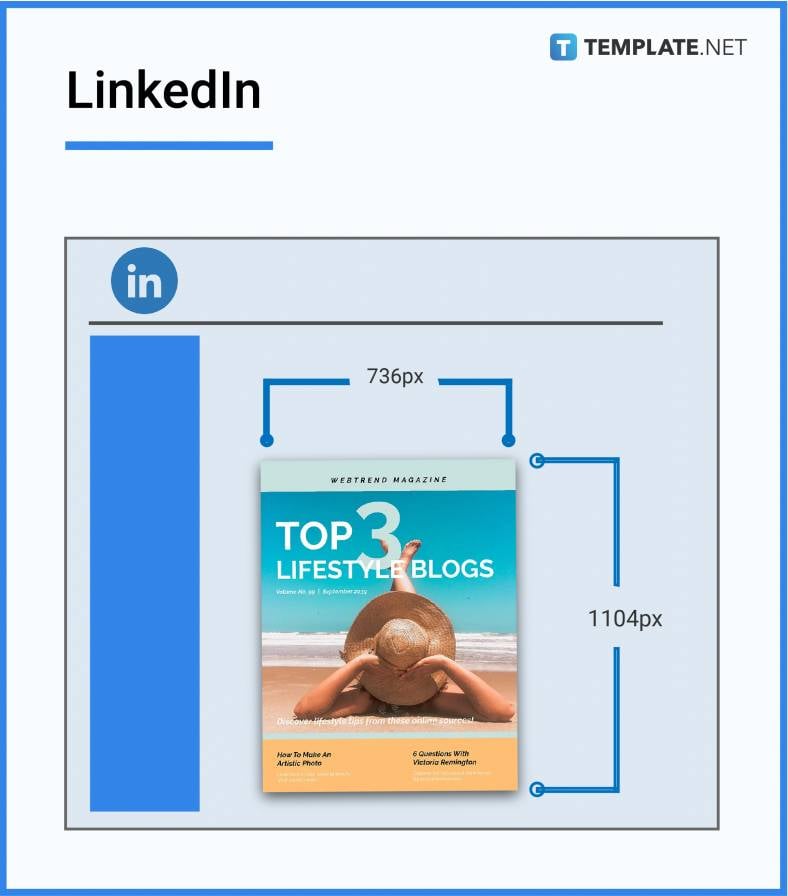
The recommended pin size for images on Pinterest are 600 × 900px, tall pins is 600 × 1260px, square pins should have dimensions of 600 × 600px.
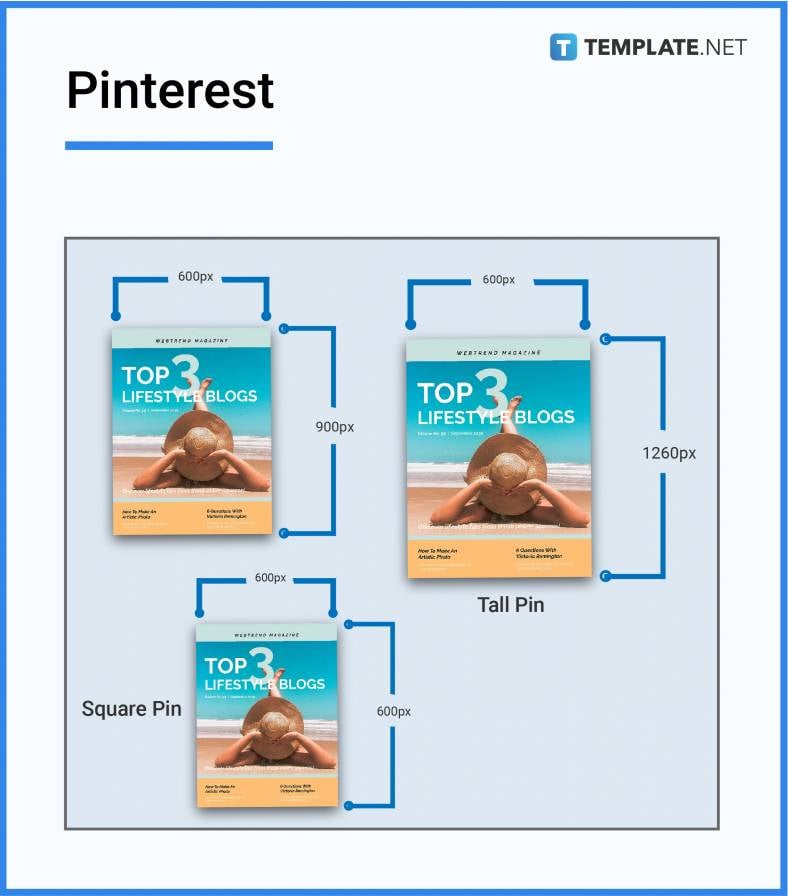
A4 paper size, with a measurement of 8.3” × 11.7” or 21.0 × 29.7 cm is one of the most commonly used sizes in the business industry and for academic submissions.
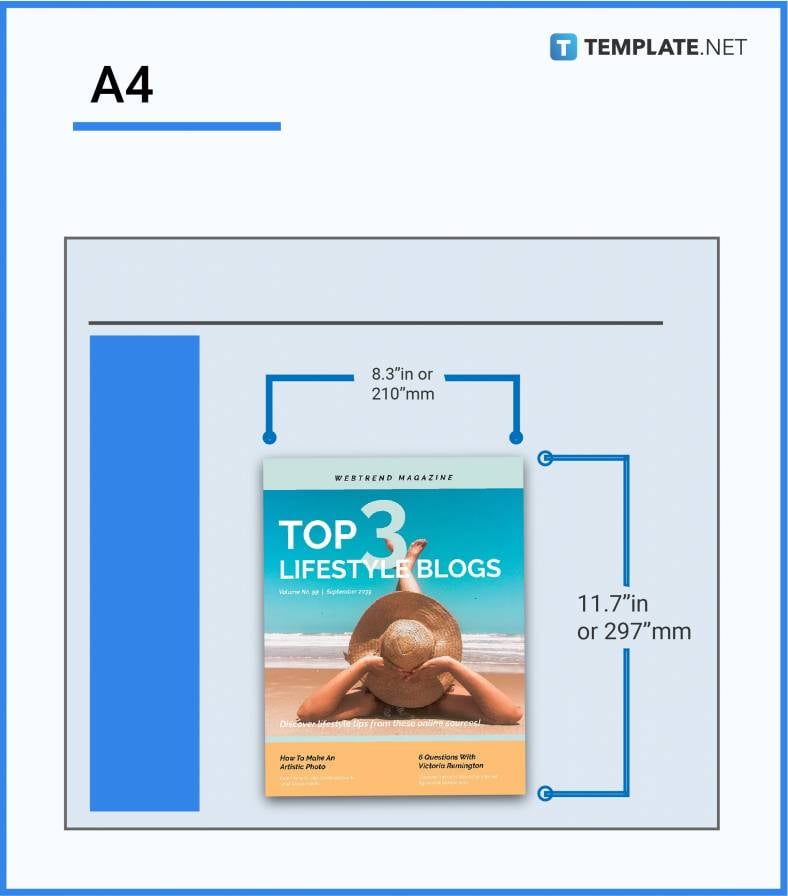
The saddle stitch binding usually has a measurement of 8.25” × 10.75” or 210mm × 273mm. This size is common to most book manufacturing companies, especially booklets of magazines with fewer pages.
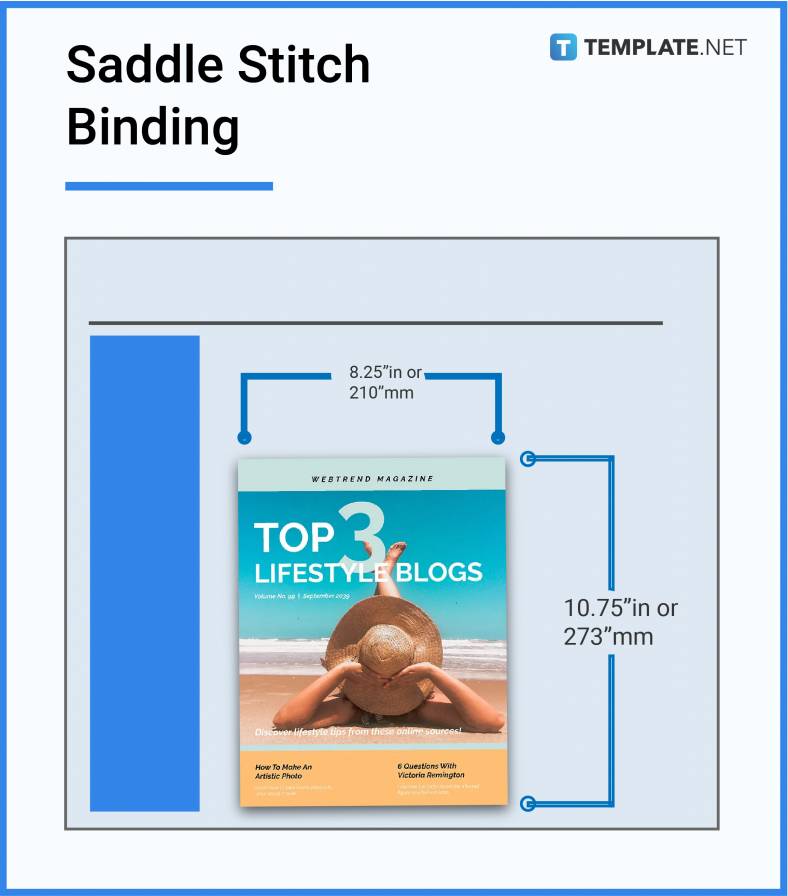
Perfect binding with the measurement of 8.25” × 10.75” or 210mm × 273mm is the standard binding method for magazines outline because it has thick paper pages. It is also commonly used for example in a National Geographic magazine because binding of this type tends to last longer.
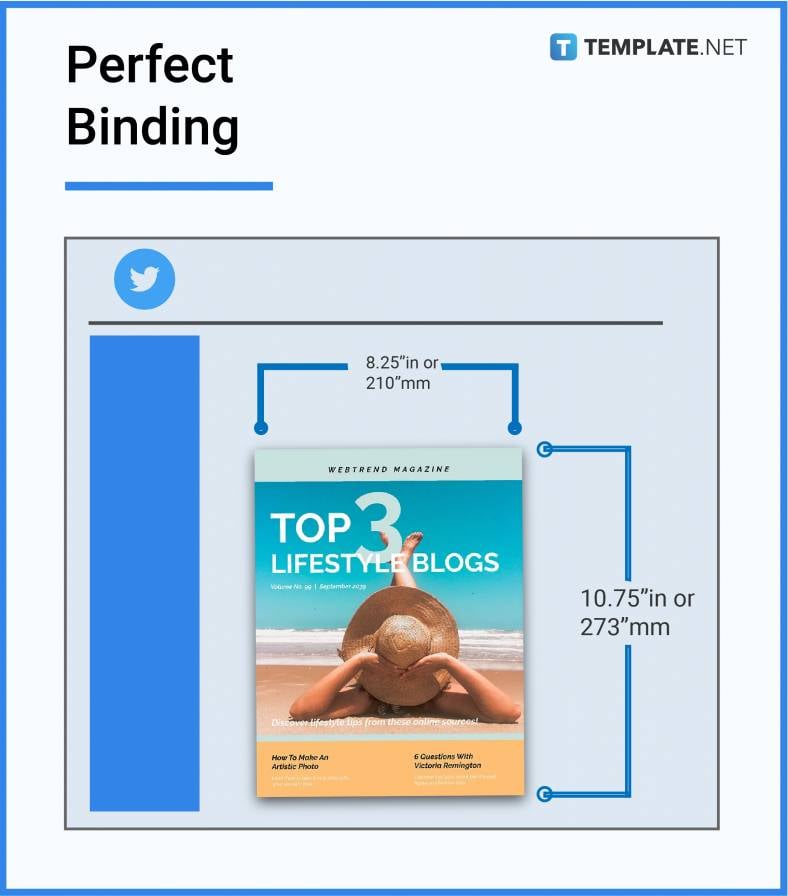
Several companies use the wire-o binding method for readers who like to rip off pages from magazines format and to avoid gutter. Its standard size dimensions are 10.75” × 8.25” or 273mm × 210mm which allows readers to tear off pages with ads, especially in apartment or clothing magazine.
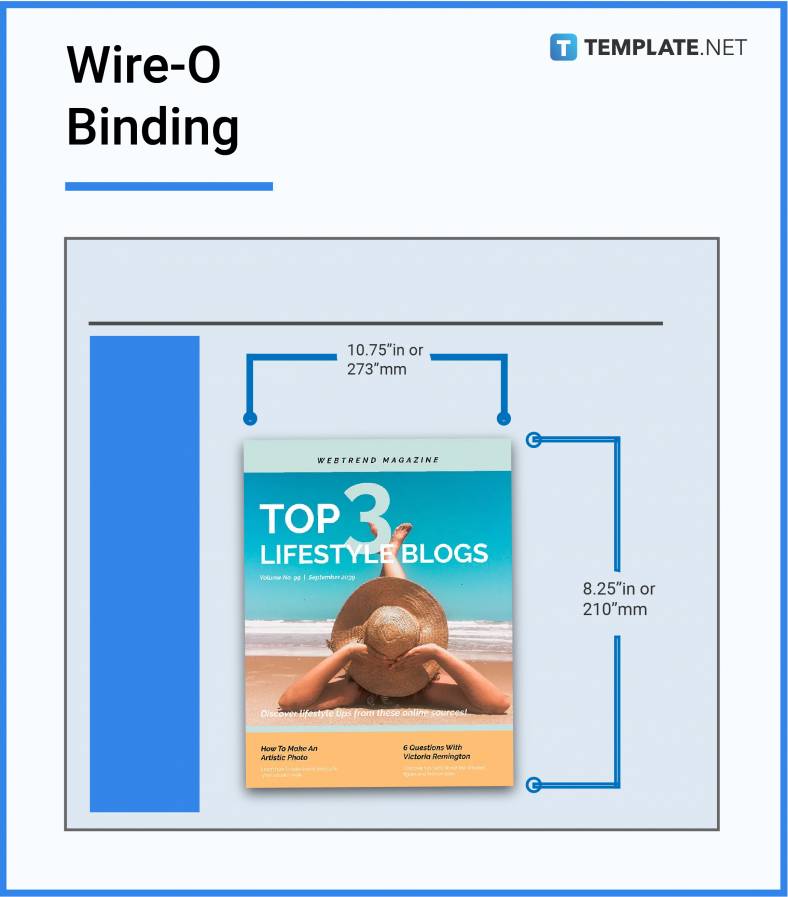
DIN A5 is a European size of 5.5” × 8.5” or 210mm × 297mm is another commonly used size by most simple magazine companies. This is because it lessens the burden of holding such material plus it improves reading time satisfaction.
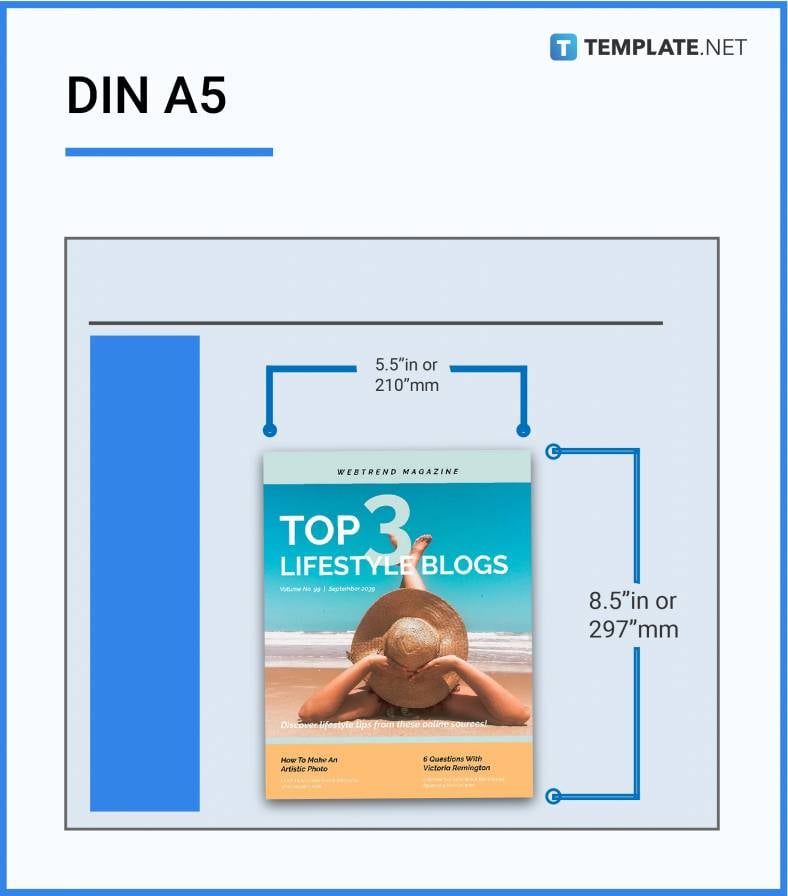
DIN A6 is a European size of 4” × 6” or 105mm × 148mm, which is half the size of A4 and A5. It fits in smaller bags which readers can bring conveniently.
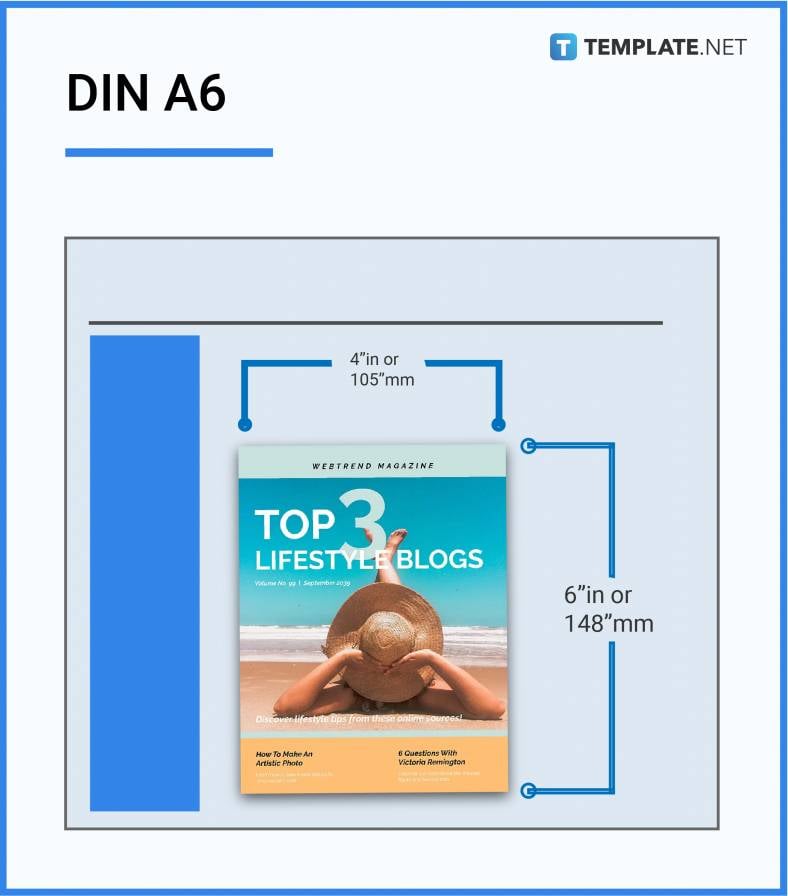
Magazine Designs that are in digital format and are sent through email have a recommended width resolution of 600 pixels to a maximum of 620 pixels. Its height is usually customized depending on the design.
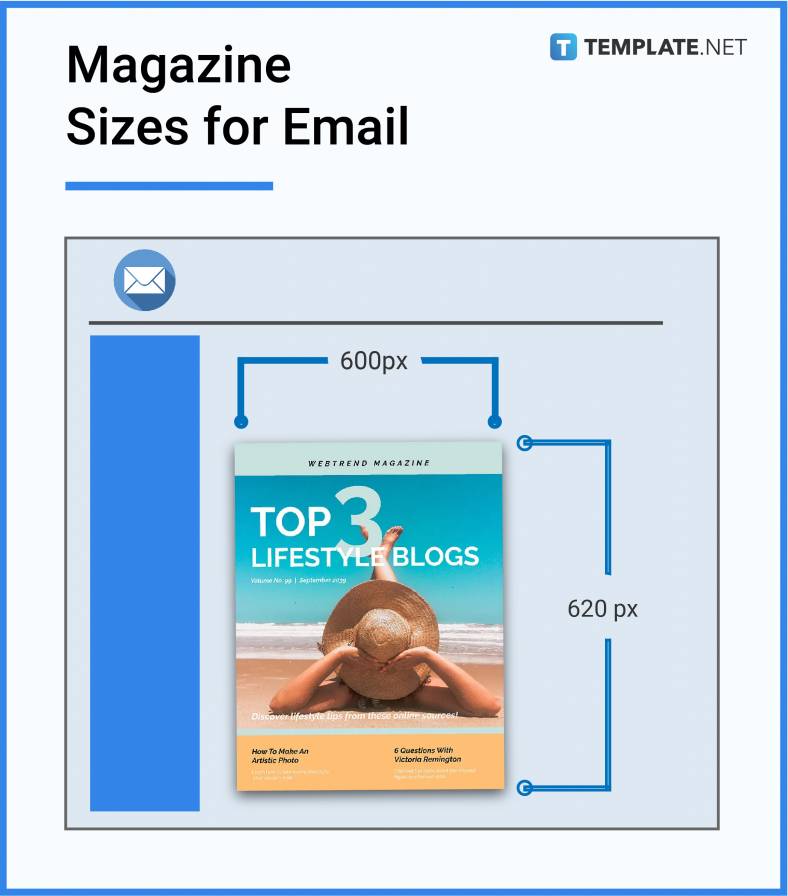
The business magazine usually has sizes of 8.38” × 10.88” or 213mm × 276 mm. This size type is economical to use and is quite cost-effective while it ensures showcasing relevant ads.
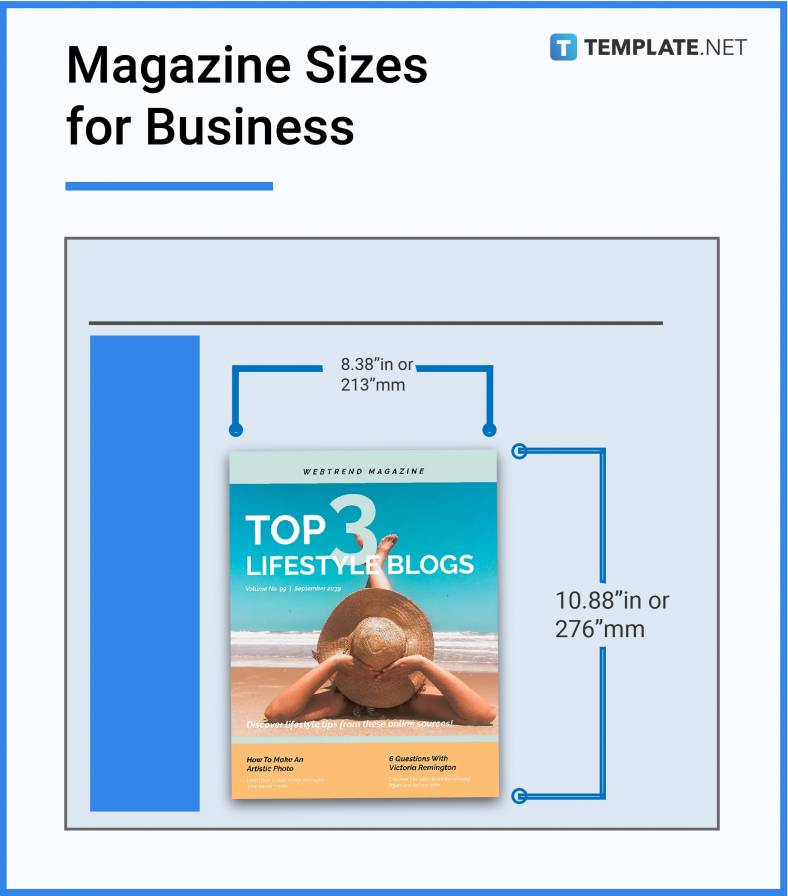
When creating a magazine using Adobe Photoshop, the best size to use is 8.5” × 11” or 216 mm × 279 mm. However, the application also offers customizable layouts and dimensions sizes you can edit to ensure you are able to fit the text, frames and images.
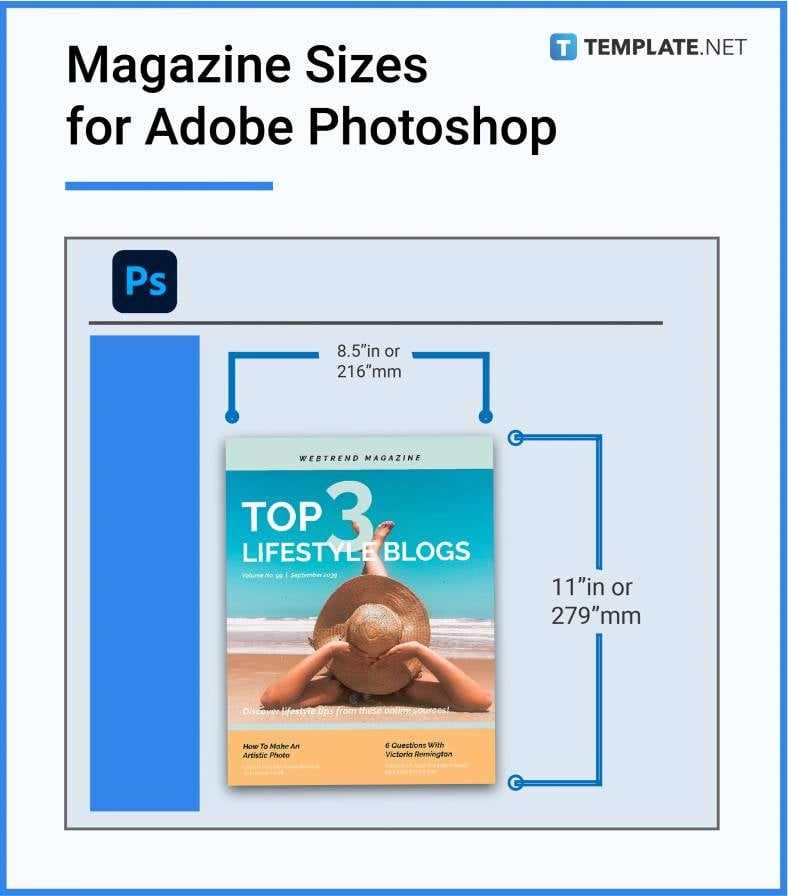
For those who opt to use Adobe Illustrator to design magazines, the best size to use is 8” × 11” or 203mm × 279mm. Yet like most applications of its kind, you have the option to make all the necessary size adjustments on a magazine’s full or spread size so you are able to get creative with the font and its design.
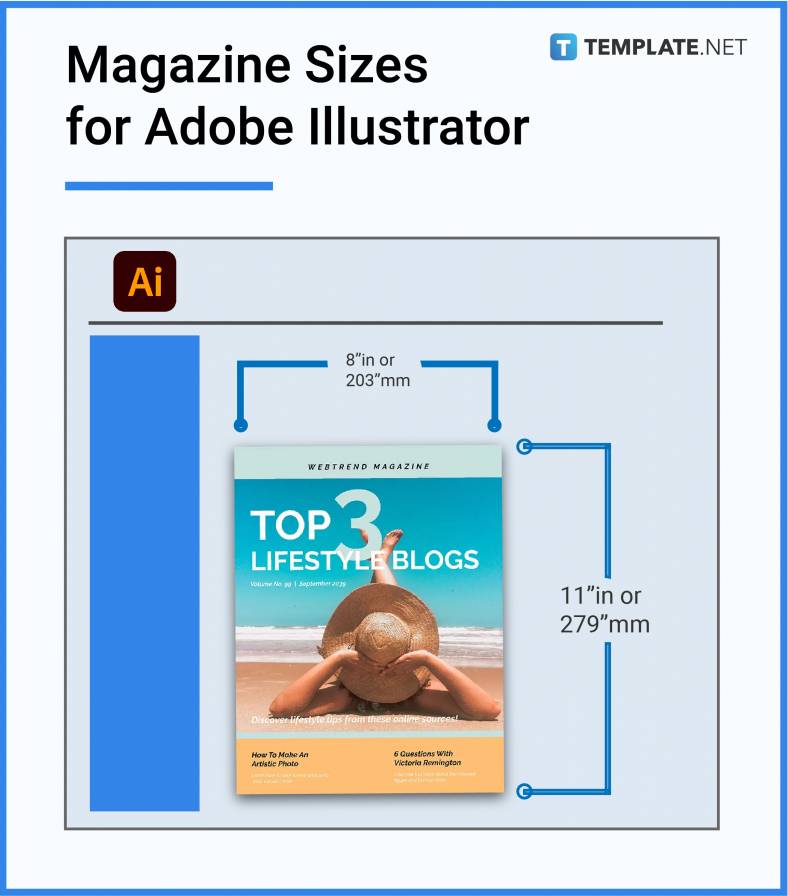
The standard size of a fashion, glamor, business, or sports magazines is 8.38” × 10.88” or 213mm × 276 mm, commonly used by multiple firms as it is the usual size people are familiar with because it is able to cover most features a magazine should have.
When using Illustrator to create a sports magazine, it has a standard size of 8.5 inches wide and 11 inches tall.
First, you need to choose file, then document setup, click the adjust layout button, change the values for width and height, and change the dimensions of your document pages.
20cm × 28 cm is an average size most magazine companies use, such as Rolling Stone magazines and other clothing firms.
InDesign has recommendations you can use for your magazines, such as text, frame, vector, and sizes you can review and choose to create appealing magazines for your readers.
Vogue uses a magazine size of 8 × 10.86 inches.
A4 (8.3 × 11.7 inches), A5 (5.8 × 8.3), are A6 ( 4.1 × 5.8) are standard sizes most magazine companies use because these can serve various purposes.
Photoshop magazine cover size is 8.5 inches in width and 11 inches tall, though you can always make changes depending on the size you prefer.
First, you will need to plan for creative designs, choose the right graphic design software (some apps are free online but with limited tools, while some are premium) or use our templates that are available for download, work with digital tools, proofread, then save or download the file.
You can measure them up manually by using tangible measuring tools or through digital tools while setting up their dimension sizes during the initial stages of digital magazine generation.
![How To Make/Create an Invitation in Google Docs [Templates + Examples]](https://images.template.net/wp-content/uploads/2023/07/How-To-Make_Create-an-Invitation-in-Google-Docs-Templates-Examples-788x443.png)
To formally invite someone or a group of people to an event or activity, you will need to send out…
![How To Create an ID Card in Google Docs [Template + Example]](https://images.template.net/wp-content/uploads/2023/07/How-To-Create-an-ID-Card-in-Google-Docs-Template-Example-788x443.png)
ID cards are used as a way to represent an individual to the company or organization they work or volunteer…
![How to Make an ID Card in Microsoft Word [Template + Example]](https://images.template.net/wp-content/uploads/2023/07/How-to-Make-an-ID-Card-in-Microsoft-Word-Template-Example-788x443.png)
ID cards are an essential part of any employee working for a company or an organization to be recognized as…
![How To Make/Create a Book Cover in Google Docs [Templates + Examples]](https://images.template.net/wp-content/uploads/2023/07/How-To-Create-a-Book-Cover-in-Google-Docs-788x443.png)
Aside from protecting a book, book covers are specifically designed to attract readers and convey the essence of the book.…
![How To Make/Create a Book Cover in Microsoft Word [Templates + Examples]](https://images.template.net/wp-content/uploads/2023/07/How-To-Create-a-Book-Cover-in-Microsoft-Word-788x443.png)
A book cover is the outer layer of a book that is used to protect its contents. Book covers are…
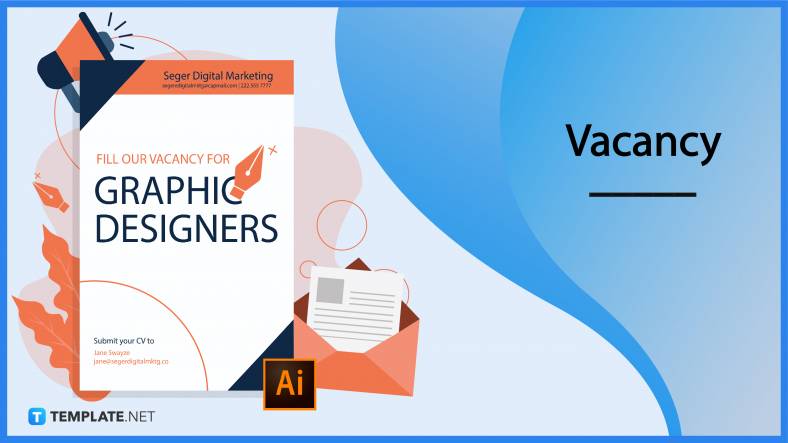
Job vacancy is a common scenario in companies and organizations. Employees leave for all kinds of reasons and when they…
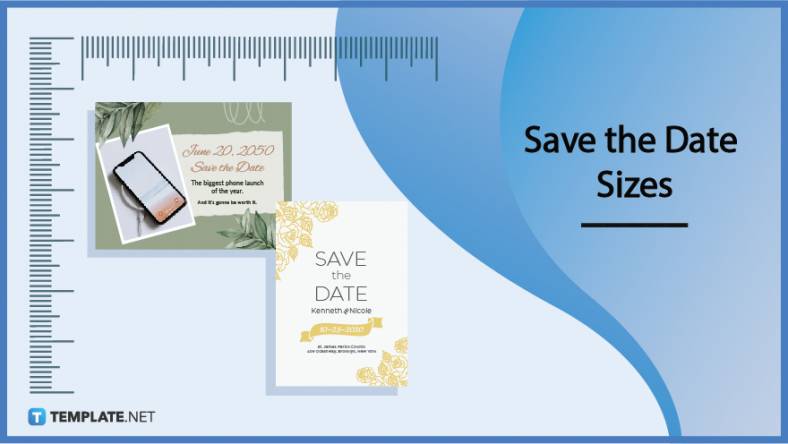
Save the date sizes are usually the same size as a formal invitation. But there are a number of different…
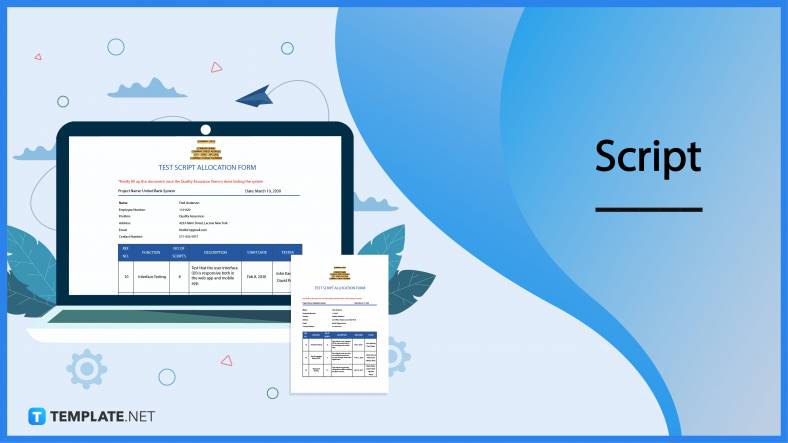
Script is a popular word that is frequently used in the entertainment world. There are a variety of areas and usages…
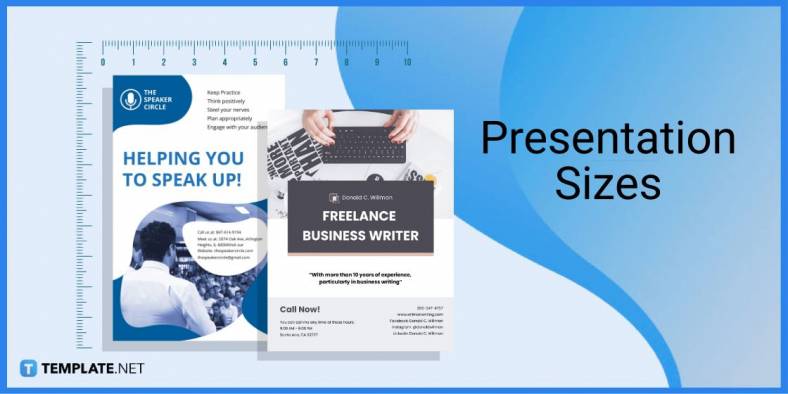
Presentations may not look as pleasant as how you design them with pictures, animations, videos, and other graphic designs without…